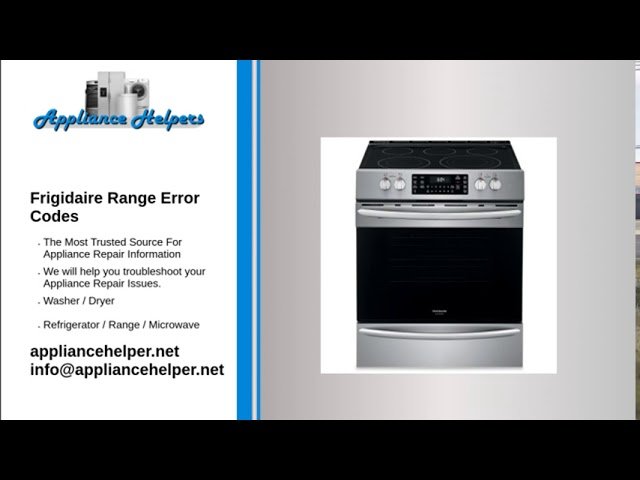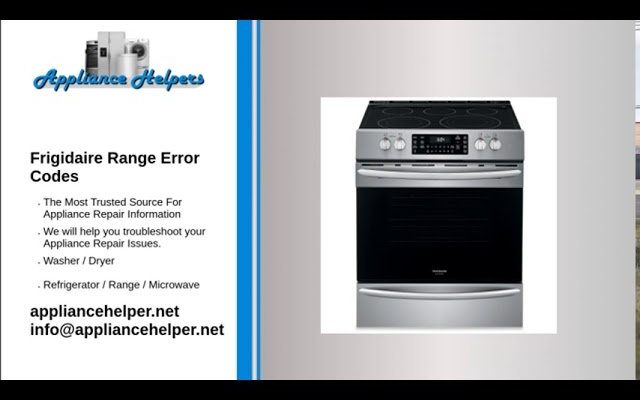
To put it simply, Error E2 typically signifies a fault in the oven’s control panel, often related to temperature sensor failures or communication errors between different components of the appliance. Imagine it like two people trying to talk through a broken phone line—messages aren’t getting through clearly, and chaos ensues. Similarly, when your oven’s brain can’t communicate with its limbs, it could lead to cooking mishaps. Now, let’s explore why it’s crucial to address this error promptly and what consequences might arise if you ignore it.
Understanding Error E2 in Frigidaire Ovens
Error codes are a lot like secret messages your appliances send when they need help. The E2 error code specifically deals with the electronics of your oven. You might be wondering, “Why my oven?” Well, over time, electronic components can wear out or get damaged—think of it like your kitchen gadget getting a little too old to keep up with modern demands. This issue typically occurs due to a failed temperature sensor, a disruption in the control board, or faulty wiring within the system.
Your oven’s temperature sensor acts much like a thermostat in your home, constantly measuring the heat inside so it adjusts accordingly. When this sensor goes awry, it might start sending incorrect information, resulting in inaccurate temperatures—a baker’s worst nightmare! Imagine setting your oven for a delicate souffle only to end up with a sunken disaster. By catching this error early, you’ll prevent these culinary catastrophes and ensure your dishes come out perfectly every time.
Now, if we think about the communication between the control board and the sensor, it’s similar to a director guiding actors. If the director can’t give clear instructions, the play falls apart. The E2 error signifies that the ‘director’ of your oven can’t communicate effectively, leading to performance hiccups. Fixing this issue is not just about eliminating the error code—it’s about restoring harmony in your kitchen setup.
The Consequences of Ignoring Error E2
Ignoring the E2 error is like ignoring the check engine light on your car. Sure, you might get away with it for a bit, but it can lead to more serious issues down the road. For example, if the temperature sensor continues to malfunction, your oven might start overheating or underheating, both of which can damage your food and the appliance itself. In extreme cases, it might even pose a safety hazard, especially if the temperatures spike unexpectedly.
Moreover, continuous use of an oven displaying Error E2 can strain other components. Just like how overworked muscles can lead to injuries, your appliance could suffer from component burnout, leading to more costly repairs or replacements. Can you imagine being without your oven during the holiday season or when you have guests over? It’s not just inconvenient; it can disrupt your entire meal planning and preparation routine.
Addressing the error promptly can save you from these potential headaches and ensure your appliance runs efficiently for years to come. You might consider contacting a professional technician if you’re not comfortable handling these repairs yourself. Remember, safety first!
Steps to Resolve and Prevent Future Errors
So, what can you do if you encounter Error E2? First, try a simple reset. Just like restarting a computer can fix minor glitches, turning your oven off and unplugging it for a few minutes may resolve the issue. If the error persists, inspecting the temperature sensor and control board is your next step. For those handy with tools and wiring, this might be a manageable task. For others, calling in a professional would be wise.
Once the issue is addressed, consider some preventative measures. Ensuring your oven is clean and free of excessive grease or dust can aid in maintaining its longevity. Additionally, periodically checking the wiring and conductivity of your appliance can help catch potential issues before they become significant problems.
Finally, keeping your oven manuals and any warranty information handy can speed up the repair process. It’s like having a lifeline to solve your appliance troubles, ensuring you’re never left in the lurch when unexpected errors arise. Taking these steps will not only extend the life of your oven but also keep your cooking experiences delightful and stress-free.
